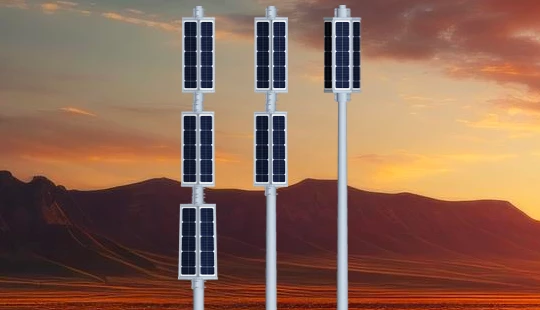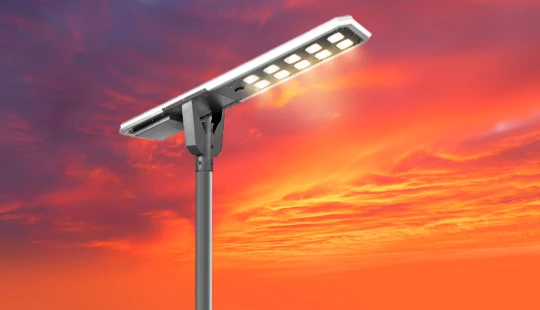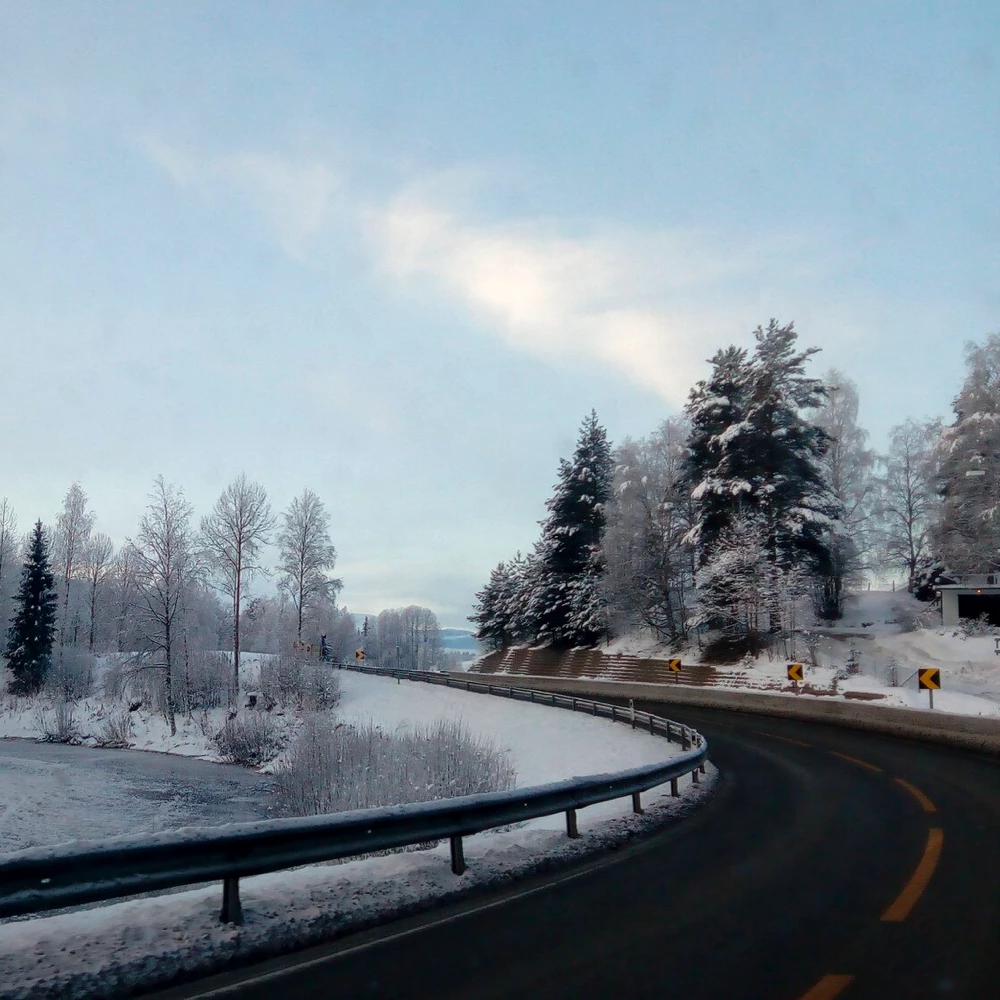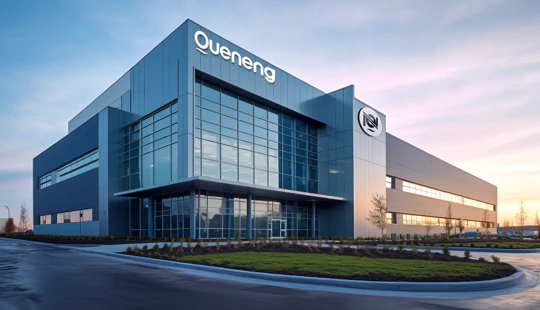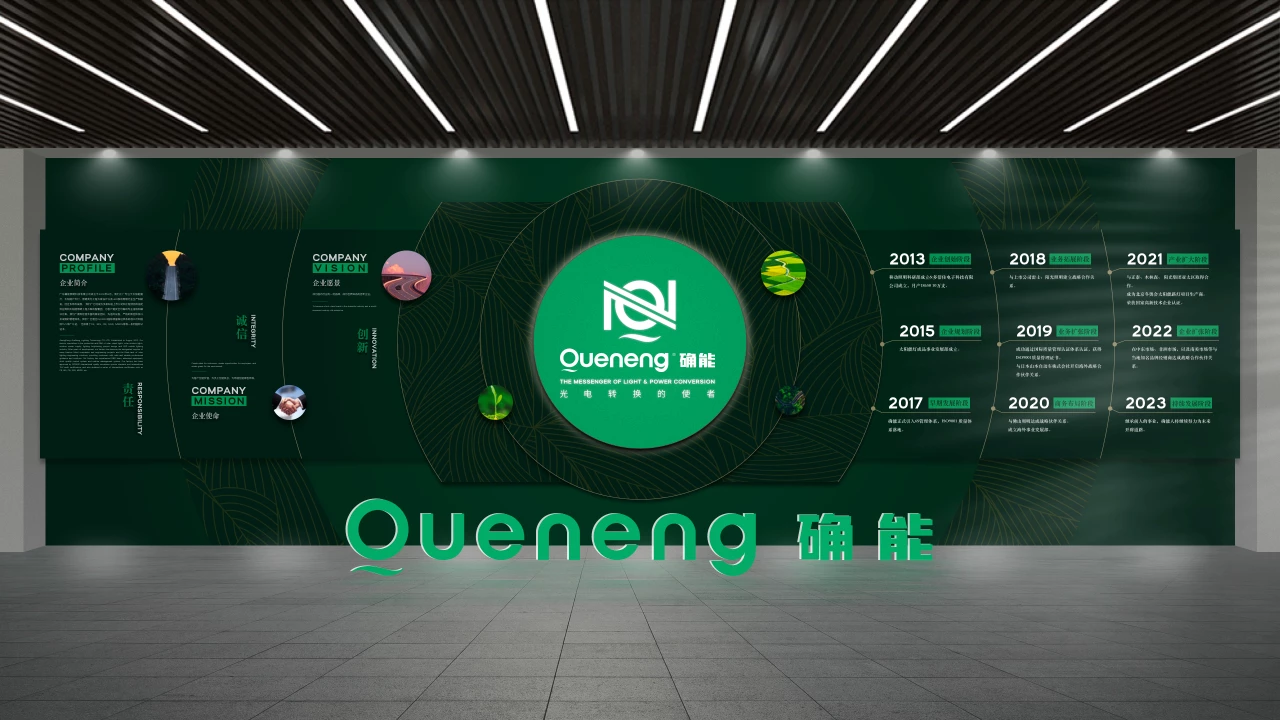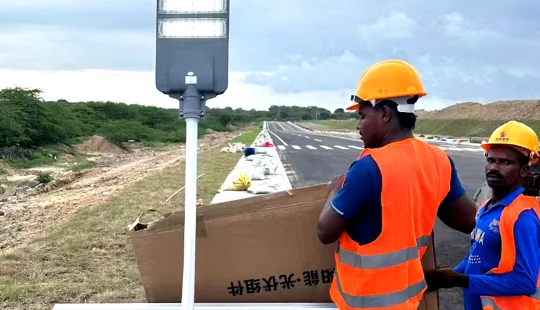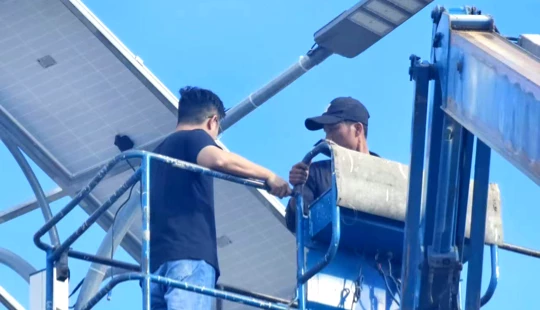what affects solar light performance | Quenenglighting Expert Guide
Understanding What Affects Solar Light Performance: A Procurement Guide
Solar lighting systems are becoming increasingly popular for their sustainability and cost-effectiveness. However, optimizing their performance requires a deep understanding of the various factors that influence their efficiency and longevity. For procurement professionals, identifying these critical elements is key to making informed purchasing decisions and ensuring robust, reliable solar lighting solutions.
How Does Solar Panel Efficiency and Degradation Impact Performance?
The solar panel is the heart of any solar lighting system, converting sunlight into electricity. Its efficiency directly dictates how much power can be generated from a given area. Modern monocrystalline solar panels typically boast efficiencies ranging from 17% to 22%, significantly higher than older polycrystalline counterparts. However, efficiency isn't static. All solar panels experience a phenomenon known as degradation, where their power output gradually decreases over time. Industry standards often cite a degradation rate of approximately 0.5% per year, meaning a panel might retain 80-85% of its original output after 25 years. Environmental factors like dust accumulation, snow cover, and partial shading can further diminish real-world output, sometimes by as much as 30% if not regularly cleaned or properly sited.
Why is Battery Quality Crucial for Solar Lighting Reliability?
The battery stores the energy generated by the solar panel, powering the light during nighttime or cloudy conditions. Its capacity, chemistry, and cycle life are paramount. Lithium Iron Phosphate (LiFePO4) batteries are now the preferred choice for commercial solar lighting due to their superior safety, thermal stability, and impressive cycle life, often exceeding 2,000 to 5,000 cycles (charge/discharge cycles) before significant capacity loss. In contrast, older lead-acid batteries offer significantly fewer cycles (typically 300-1000). A battery's performance is also sensitive to temperature; extreme cold can reduce usable capacity, while high temperatures accelerate degradation. Proper battery management systems (BMS) are vital to prevent overcharging, over-discharging, and over-temperature, extending the battery's lifespan and ensuring consistent light operation.
What Role Do LEDs and Optical Design Play in Output?
While solar panels collect energy and batteries store it, the Light Emitting Diode (LED) is responsible for converting electrical energy into visible light. High-quality LEDs offer remarkable luminous efficacy, often exceeding 150-200 lumens per watt, maximizing light output from available power. The lifespan of quality LEDs is also impressive, commonly rated at L70 (meaning 70% of initial lumen output) for 50,000 to 100,000 hours, significantly outlasting traditional light sources. Beyond the LED chip itself, the optical design of the fixture – including lenses and reflectors – critically determines light distribution and uniformity. A well-designed optic ensures light is directed efficiently to the target area, minimizing light pollution and maximizing illumination effectiveness, preventing energy waste.
How Do Charge Controllers Optimize Power Management?
The charge controller is the brain of the solar lighting system, regulating the flow of electricity from the solar panel to the battery and from the battery to the LED load. Its primary functions include preventing overcharging/over-discharging of the battery and optimizing power transfer. There are two main types: Pulse Width Modulation (PWM) and Maximum Power Point Tracking (MPPT). MPPT controllers are generally more efficient (95-99% efficiency vs. PWM's 75-85%), especially in variable weather conditions or when panel voltage significantly differs from battery voltage. An MPPT controller can extract up to 30% more power from the solar panel under certain conditions compared to a PWM controller, leading to more reliable operation and potentially smaller panel requirements. Advanced controllers also offer features like dimming schedules, temperature compensation, and remote monitoring, further enhancing system performance and longevity.
Environmental Factors: Beyond the Components
While component quality is crucial, the operational environment plays a significant role in solar light performance. Solar irradiance (the amount of solar power received per unit area) varies significantly by geographical location and season; a system designed for a high-insolation region will underperform in a low-insolation area without proper sizing. Extreme temperatures affect both battery capacity and solar panel efficiency. Dust, dirt, bird droppings, or even leaves accumulating on the solar panel can severely reduce its output. Proper installation, including optimal panel tilt angles and avoiding shading from trees or buildings, is essential. Regular maintenance, such as cleaning solar panels, can ensure the system operates at its peak efficiency throughout its lifespan.

Have more questions about our products or services?
The latest hot news you might like

Discover how solar panels power street lights, exploring the technology behind solar energy conversion, storage systems, and how solar-powered street lights are revolutionizing urban and rural lighting solutions.

Learn how AC Solar Hybrid Street Lights work, their advantages, disadvantages, system behavior in low-sunlight conditions, and why hybrid technology is ideal for regions with unstable sunlight.

Municipalities around the world are increasingly adopting solar-powered streetlights as part of their urban development strategies. Rising energy costs, the need for sustainable infrastructure, and government green initiatives are driving cities to switch from traditional street lighting to advanced LED solar streetlights.
Queneng Lighting provides municipalities with cost-effective, energy-efficient, and durable solar lighting solutions, ensuring safe and sustainable public spaces.
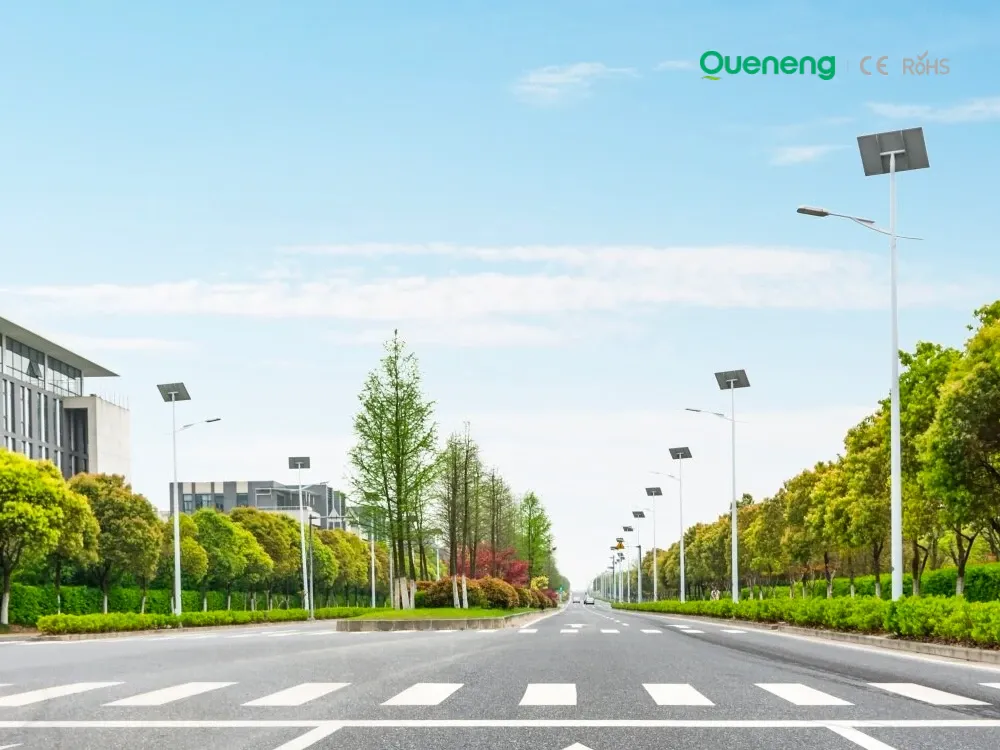
In recent years, the purchase of solar streetlights for municipalities has become a growing trend across the globe. Local governments are under pressure to reduce public expenditure, promote green energy, and create safer communities. Solar streetlights provide a reliable, cost-effective, and sustainable solution that meets these needs. Queneng Lighting, as a leading solar street lighting manufacturer, has supported multiple municipal projects worldwide with customized and energy-efficient solutions.
FAQ
Municipal and Public Infrastructure
Do solar streetlights require any wiring?
No, solar streetlights are entirely independent of the electrical grid. They operate using solar panels, batteries, and LED lights, eliminating the need for underground wiring.
Solar Street Light Luxian
Are Luxian solar street lights suitable for installation in remote locations?
Yes, Luxian solar street lights are ideal for remote or off-grid locations, as they operate entirely on solar power and do not require any connection to the electrical grid. They are perfect for rural roads, pathways, parks, or other outdoor spaces that lack access to traditional power sources.
Battery Types and Applications
What is a photovoltaic cell?
Distributors
What kind of marketing and sales support does Queneng provide?
We provide our distributors with a wide range of marketing materials, including brochures, product specs, digital content, and sales guides. Our team also offers training to help you effectively communicate the benefits of our solar lighting solutions.
Solar Street Light Lufeng
How do Lufeng solar street lights help reduce energy consumption?
Lufeng solar street lights use solar power, which is a renewable and free energy source, significantly reducing energy consumption from traditional power grids. Additionally, they feature energy-efficient LEDs and smart controls that adjust brightness based on ambient light or motion detection, further conserving energy.
Solar Street Light Luhua
What is the main advantage of using Luhua Smart Solar Street Lights over traditional street lights?
The main advantage of Luhua Smart Solar Street Lights is their reliance on renewable solar energy, which reduces dependency on the electrical grid. This makes them not only more eco-friendly but also more cost-effective in the long term. Additionally, the smart features such as motion detection and adaptive brightness make them highly energy-efficient compared to conventional street lights.


Queneng's Luzhou Solar Street Light provides sustainable, energy-efficient outdoor LED lighting. Powered by solar energy, it's a cost-effective and eco-friendly solution for illuminating streets and pathways. A reliable and durable LED solar street light.

Queneng’s Solar Street Lights are designed to provide reliable, energy-efficient lighting for streets, parks, and other outdoor spaces.

The Solar Streetlights of Luhao for Municipalities are designed to deliver reliable, energy-efficient, and cost-effective public lighting solutions. Equipped with advanced LED technology, durable lithium batteries, and high-efficiency solar panels, these streetlights provide consistent illumination for roads, parks, residential areas, and government projects.

The Solar Street Light offers an energy-efficient, eco-friendly solution for illuminating outdoor spaces.

Discover the Lulin High-Performance Solar Street Light by Queneng, a durable and energy-saving outdoor lighting solution. Designed for efficiency and reliability, it harnesses solar power to sustainably illuminate streets and pathways. Optimize your outdoor spaces today with Queneng's innovative solar street lighting technology.
If you would like more information about Queneng solar lighting solutions, please send us a message by filling out the form below. Our professional team will get back to you within 24 hours!
Rest assured that your privacy is important to us, and all information provided will be handled with the utmost confidentiality.
Schedule a Meeting

Book a date and time that is convenient for you and conduct the session in advance.
Have more questions about our products or services?

